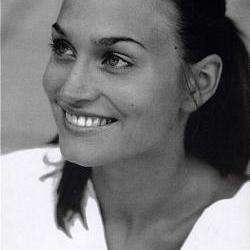It is a courageous undertaking to take two things that people demonstrably dislike – airports and reflections on death – and combine them with music that is, at least partially, certainly not masterful. Thanks to strong singing and exceptional choral and staging work, the Theater an der Wien has made exactly that work fairly well. Although Christian Guth’s production, entitled Lazarus, will be nobody’s favorite this season, it is certainly one of the better ways to hear this little-known fragment of an unfinished oratorio as well as some other interesting works of both Franz Schubert and Charles Ives in a staged performance.
Schubert’s Lazarus was conceived in three acts and is based on a libretto from August Hermann Niemeyer. For unknown reasons, Schubert abandoned the project, completing the music only up to partway through the second act. Claus Guth took this fragment as the first two scenes of the evening, and combined it with other Schubert works to comprise the third and fourth scenes. Thus, after intermission the audience heard choral gems such as Dreifach ist der Schritt der Zeit D.69 for unaccompanied women’s voices, the “Sanctus” from the Mass in E flat Major D.950, Grab und Mond D.892 for unaccompanied male voices, and Nachthelle D.892, for tenor solo, male chorus and piano – as well as “Der Wegweiser” from Winterreise and the Charles Ives pieces The Unanswered Question and “The ‘Saint-Gaudens’ in Boston Common” from Three Places in New England. And though this juxtaposition of Ives and Schubert works sounds like the musical equivalent of brushing your teeth and then drinking orange juice, it works better than the oratorio itself for the most part, which is unspectacular enough that nobody will be crying to hear it again any time soon.
The biggest reason for the evening working as well as it does has to do with the strength of the vocalists – both solo and choral – as well as some meticulously executed and well thought-through staging. Throughout the first act, the extras (Arnold Schoenberg Chor) are in various speeds of movement and long and elaborate “freezes” which must be murder to hold. They are brilliant, and in the choral bits in the second half they have never sounded better, singing with superb delicacy and control. Also deserving of mention is dancer Paul Lorenger who was called upon to roll at a snail’s pace down and then back up a massive staircase and dance around the corralling ribbons in an airport check-in for his role as Lazarus’ double.
The major roles are as strongly cast and the balance with the Vienna Symphony Orchestra under the baton of Michael Boder is perfect. Kurt Streit is effective as the dying Lazarus, his strong tenor voice cutting through the hall as he pours over his X-ray sheets or stares at the ticket in his hands. Annette Dasch is a vocal highlight as his sister Maria, masterfully and clearly delivering her “Trübe nicht mit Klagen deine Seele”. Stephanie Houtzeel is effective as the desperate sister Martha, and Ladislav Elgr a believable Bible-peddling Nathanael. Florian Boesch not only incorporated the faithless, hopeless Simon but sings a dramatic “Wo bin ich... O könnt ich, Allgewaltiger” as well as a moving “Wegweiser”. Çiğdem Soyarslan plays the role of Jemina, clad here a stewardess. She has some wonderful moments and I look forward to hearing more from her in future. Jan Petryka’s tenor solo in “Nachthelle” rounded out the cast nicely.
Unfortunately, dramaturgically this work left me a bit cold. Although the concept of limbo being the transit hall in an airport is wonderful and apt, there are details which defy understanding, and disturbing incongruences of behavior. The characters interact at certain points, and then are seemingly invisible to each other, sometimes within the same scene. For reasons left unclear, white feathers are important to Nathanael and the sisters, and there was some importance pinned to the tickets that the characters carried which was never explained. Lazarus is supposed to arise at the end – or does he? One of him ascends the staircase while the other remains invisible to the sisters and other characters in the scene. The second scene is set in a “place of the dead” and resembles a mausoleum, but is somehow clearly also still in the airport. At seemingly random points, characters lie down on the ground as if dead, then stand back up and continue with their business. In general the second half works better. Partially because of the interpolation of disparate music instead of an oratorio with a linear storyline, one is able to sit back and accept different scenes as unconnected commentary on a theme of death and afterlife and enjoy the beautiful visual effects of the many, very beautifully designed visual tableaux.


